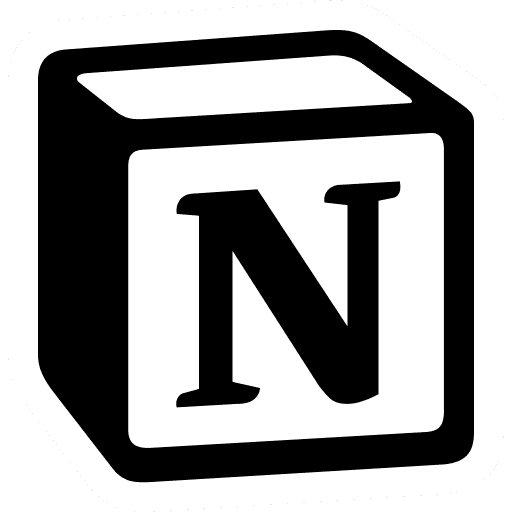Auli - AAC Device
Making Communication easy for Non-Verbal Kids with ASD*
12 minutes read • 3 minutes if you scan
Jabalpur, India
Team
Rahul R Nadkarni 👋
Sriya Kommu
Giridhara Prashad K R
My Role
Interview, User Persona, Empathy Mapping, User Scenarios, Heuristic Evaluation, Competitive Analysis, Wireframing, Prototyping
Timeline
Aug 2024 - Nov 2024
Tools Used





What is ASD?
ASD stands for Autism Spectrum Disorder. It is a neurological and developmental disorder that affects how people interact with others, communicate, learn, and behave.
The Why are we making this?
At a glance
The final design aimed at achieving a portable device which ensured that the child could use it anytime, anywhere, and also ensure the functionality fo the device, which helps the children to understand and communicate with the people around them. The design was based of PECS (Picture Exchange Communication System), which was a well established system of communication in India for such children, and hence wouldn't need much learning to use it.
DISCOVER
Severity of the Issue at hand.
We conducted Preliminary Research on our own to figure out more details about the issue at hand. Here's what we found about…
Even though we gave it our all, we realized that it wasn't sufficient. Consequently, we decided to engage with real individuals. We conducted interviews with educators from Rainbow Society for Differently Abled in Lucknow, a school recommended by our friend whose brother studies at, in Lucknow and has Down Syndrome. This establishment focuses on aiding such children in building a promising future.
We were fortunate to exchange words with parents, siblings of these precious children, and notably Swati Sharma. Rubbing shoulders with Rainbow Society, she is recognized for her significant contributions towards ASD.
Gaining insights through their experiences, we sought after a commonly asked question…
“Is there someone who already tried to solve this issue?”
What are we dealing with?
Our team concluded that these kinds of devices already exist globally. By conducting thorough conversations and market evaluations, our understanding of them deepened.
Here's a brief of our key discoveries…
We figured out some common concerns and issues in these through the interviews…
Getting a little personal
We sought information particular to the child to grasp their actions, responsibilities, aspirations, and so forth.
We then compiled this data based on our requirements…
From all the data gathered, one conclusion was evident.. These challenges were not exclusive to children with ASD. Thus, we removed our blinkers and aimed at a larger group. Our attention was now centered on…
All Non-Verbal Kids
DEFINE
Sooo much Data… But what now?
Therefore, it became necessary to derive meaning from the vast data we acquired through interviews and our investigation.
Initially, we attempted to comprehend User Goals, considering the viewpoints of both The Non-Verbal Child and the Caretakers.
What do they Want?
The Child's Perspective
We created a User Persona and Empathy Mapping of the child based on the data from the interviews.
The Caretaker's Perspective
Similar to the child, we also created a User Persona and Empathy Mapping of the caretaker based on the data from the interviews.
The How and Where to apply the solution
We now identified scenarios in which the Child and/or the caretaker will be using the applied solution. On the way, we also figured out some Dos and Don'ts.
By the end of this, we came to a conclusion. We had a clear picture of what we wanted to do and what we wanted to solve.
How might we…
design an interface for an AAC Device that is intuitive, customizable and easy to use for Non-Verbal Children who may or may not have Cognitive Difficulties.
We also jotted down a few "sophisticated terms" which needed to be incorporated so the final layout truly had an impact.
Considerations
It was finally time for applying the data that we synthesized all this time!
IDEATE
Understanding the system
Finally, we started working on the solution!
However, it was crucial that we had a solid comprehension of the PECS (Picture Exchange Communication System), the framework we were operating on, beforehand. Thus, we drew out a User Flow depicting the present usage pattern of PECS with physical cards by the kids.

1. How to Communicate
Individuals learn to exchange single pictures for items or activities they really want.

2. Distance & Persistance
Still using single pictures, individuals learn to generalize this new skill by using it in different places, with different people.

3. Picture Discrimination
Individuals learn to select from two or more pictures to ask for their favorite things. These are placed in a PECS Communication Book.

4. Sentence Structure
Individuals learn to construct simple sentences on a detachable Sentence Strip using an “I want” picture followed by a picture of the item being requested.

5. Attributes & Language Expansion
Individuals learn to expand their sentences by adding adjectives, verbs and prepositions.

6. Responsive Requesting
Individuals learn to use PECS to answer questions such as “What do you want?”

7. Commenting
Individuals are taught to comment in response to questions like, “What do you see?” and “What is it?” They learn to make up sentences starting with “I feel”, “It is a”, etc.
Branching into Tangents
So now the 3 of us figured out 3 different directions to work in… so we picked one of them.
Summing up the Device.
Our prime motivation came from our most loved reading gadget, naturally with numerous thoughts in mind. This is how it unfolded…
Coming to the tech used.
And finally, the device that we came up with…
A breakup of the physical buttons on the device…
Speaking of the Icons.
This is the point where things began to escalate. Symbols held the utmost significance in our System, as the entire system's functionality revolved around the users' ability to interpret these symbols.
Our prime objective wasn't to strive for aesthetics in the symbols, but to ensure they were easily understandable, primarily to children, who are our main users. As a consequence, we established some fundamental principles... based on which we designed an initial ensemble of 32 icons.
Now coming to the Interface.
So I initially started by figuring out 2 major use cases of the interface.
Subsequently, I reviewed the prevailing solution.
The most widely recognized one was the Avaz App. This was the most prevalently utilized AAC tool in India, boasting over 40k picture cards. Indeed, that was impressive! However, it had its flaws.
Despite serving an admirable purpose, the apps alone cost Rs. 11k. Overlooking the commercial side, let's concentrate only on the user experience... I performed a Heuristic Evaluation of the app to determine three things... What they got right, what they got wrong, and aspects they implemented correctly yet could still enhance.
Heuristic Evaluation of Avaz App (Competitor).
After all this exhaustive research work, it was finally time for the fun part. So I came up with some lo fidelity wireframes for the screens based on the User flow created earlier.
PROTOTYPE
Time to make the actual screens
For better understanding, we made a demo video explaining the working of the prototype.
I have listed down the screens below…
FUTURE SCOPE
Okay, so now what?
We pinpointed potential forthcoming actions to concentrate on, particularly emphasizing the commercial component, along with the incorporation of AI to serve a more tailored experience to the consumers.
RETROSPECTIVE
Made with love ❤️.
The Squad
I'm genuinely grateful for the wonderful people I worked with for this amazing experience. Gathering varied learnings, accounting for possible misses from each angle, I learnt how crucial it was to just have fun and get well along with the people which enhanced our shared sight for the end goal.
For the Community
Ultimately, everything revolved around aiding these children, and ensuring their happiness. Our collective vision towards this aim is what brought our product to life.














































